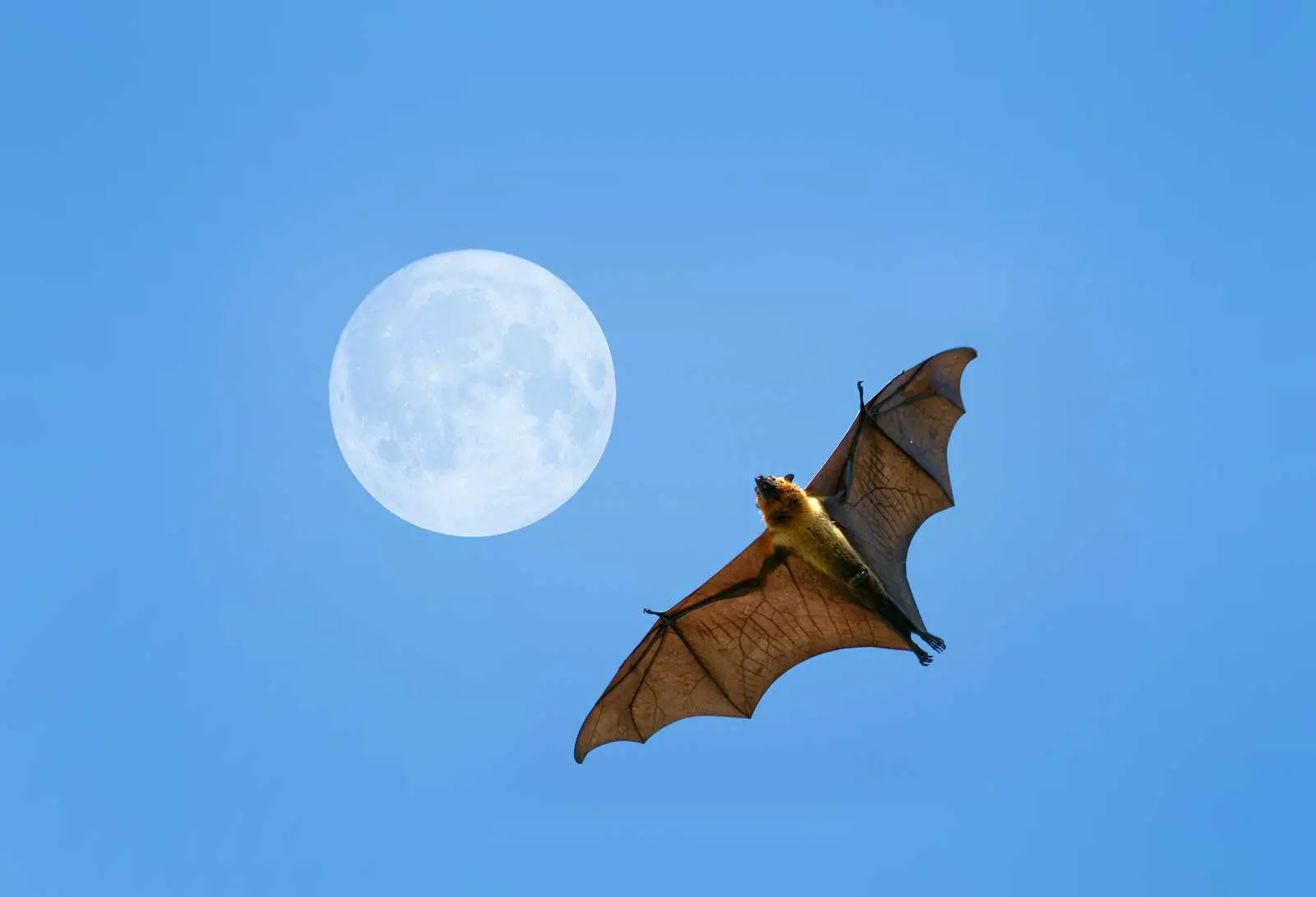To sleep or not to sleep, that is the question when it comes to bats. Or is it? Not quite. There is another option available to bats, and that’s to migrate. However, even condensing things down into those quick and easy options doesn’t quite cover it, because it’s rarely an either/or situation. In fact, bats can typically do either and choose whether to sleep or to hibernate.
Of course, “choose” might imply a stronger degree of decision making than is actually present. It’s less of a “Pizza or Chinese food tonight?”-style “choice” bats make than it is them simply deciding based on stimuli, survival instincts, and what suits them best at the moment.
With that in mind, let’s answer the eternal question of “where do bats go in the winter?” by taking a closer look at hibernation and migration.
Migratory Bats
Bats may be little fuzzballs, but they clearly don’t have the heavy fur necessary to ride out the cold temperatures of winter, which is a major reason why they migrate. In addition, when the weather gets cold the bugs get scarce, and given the fact that most bats feast primarily on insectoid buffets, and that those who don’t instead rely primarily on fruits – which also die off with the winter frost – those are yet more reasons for bats to leave for southerly warmer climes.
For example, Mexican free-tailed bats – which are the most common bats in Texas – to silver-haired bats in Washington State choose to get their Frank Sinatra on “South of the Border” and indeed fly “Down Mexico Way.” In fact, silver-haired bats are found all across North America, but wherever they live, they typically choose to fly south for the winter, so if they don’t wind up in Mexico they might be “California Dreamin’” or chilling in the Florida Keys.
To take another example, the little brown bat, another common bat across North America, also travels south for the winter. That said, as alluded to above, asking “do bats migrate?” versus “do bats hibernate?” is not an either/or dichotomy when it comes to most bats, and that’s certainly the case for this bat breed and those like them. Little brown bats migrate southward and then choose to migrate for some of the winter as well. What’s more, given the “little” part of their name, you might think these bats might be easy prey while flying south for the winter on their own, and you would be right – which is why they don’t go it alone but fly as a colony. Several other bat species do this as well, choosing the safety of numbers over going it alone come wintertime.
Gray bats get the prize for traveling the longest distances for their migrations – not quite “500 Miles” but a still-impressive 100 to 200 miles, with the record held by colonies traveling 325 miles.
Hibernating Bats
If bats are unable or unwilling to travel so far for the winter, however, they can simply hunker down for a long hard winter by hibernating. This isn’t as simple as sleeping away the snowier temperatures, however. In fact, while it may seem like sleep to the naked eye, hibernation involves shutting down an animal’s body to a far greater extent.
Mammals’ body temperature is a result of burning energy, which is in turn connected to your metabolic rate. When mammals that hibernate slow down their metabolic rate, they are able to slow the rate at which they burn energy, which in turn allows them to “do more with less.” In fact, bats can drop the amount of energy that they use when hibernating by as much as 98%.
If you think that dropping the amount of energy you use by as much as 98% for a period of months sounds like something that would radically operate the way your body operates, you would be right. Just how much of a drastic change in their routine does that involve? Normally, bats’ hearts beat at a rate of around 200 to 300 beats per minute. That’s far faster than humans’ hearts beat, which once again has to do with bats’ metabolism. However, when they begin to hibernate, bats are able to drop that number down to an absolutely astonishing low of 10 beats per minute. In addition, because metabolism burning energy is the cause of one’s body heat, when bats lower their heartbeats to that incredible low of 10 beats per minute, their body temperature drops precipitously as well.
During the rest of the year, this extremely low body temperature and low rate of heartbeat would indicate a nearly-dead bat. During the hibernation season, however, it is the key to their survival.
Of course, dropping their body temperature and heartbeat leaves these bats incredibly vulnerable, which would make them easy pickings if they slept in exposed areas. That’s why they instead take up residence in caves, mines, rock formations, and similar areas where bats hibernate (called “hibernacula”), which offer shelter and low levels of light. In addition, these hibernacula offer the hibernating bats stable and temperate conditions between 32 to 49 degrees Fahrenheit. For comparison’s sake, the average temperature of a bat cave (Bruce Wayne and Alfred Pennyworth notwithstanding) during the summer months is about 60 degrees, with temperatures closer to 70 degrees preferable for raising baby bats.
Once they enter into hibernation they are likely going to be set for a time, so bats need to be sure that they have found a good, safe space before settling down for the winter. While bats may hibernate for as little as 12 to 19 days, they can hibernate for much longer than that, with it not at all uncommon for them to go into a hibernation period of more than 80 days.
How Bats Are Special
It is worth underscoring just how rare it is for animals to be able to fluctuate between migration and hibernation. Most animals that have the physical strength and stamina to migrate do not also possess the ability to drop their body temperature and hibernate. On the flip side, many animals that hibernate for the whole winter do so because they are unable to make the trek across the better part of a continent to get to warmer climes – and then come back in the summer. It is also worth noting that bats in warmer areas like Florida can simply stay out year round.
What do bats do in winter? What other animals don’t or can’t – whatever they want.
In addition, not only are bats able to perform both migration and hibernation, they’re “good” at both. This isn’t a case where two things are “technically possible” for an animal but one is clearly more ill-suited to the animal’s routine or physical abilities than the other. Bats fly south in massive numbers to protect the colony and enable them all to find the most efficient route to their destination, making them effective migrators. On the other hand, they are also able to drop their body temperature down and ride out a long hard winter by sleeping it off and requiring less food.
In short, while they might be small and don’t look like much, bats are a lot hardier than you might first imagine, and their combination of migration and hibernation skills are a testament to that.

